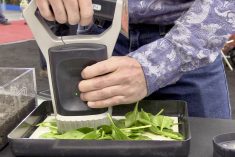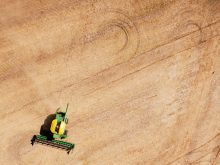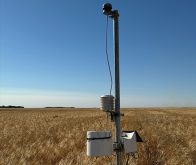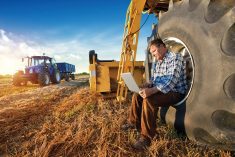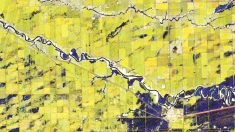Farmers are learning more and more about the upside of artificial intelligence in agriculture these days. Benefits include lower input costs, plant breeding improvements and optimized production that contribute to higher yields and additional farm revenue.
According to Dan Lussier of Enterprise Machine Intelligence and Learning Initiative (EMILI), AI is also helping producers make better decisions for their farms.
“There are opportunities to make sense of and come up with insights from the growing amount of agriculture data that is being captured, created and produced both on farm and elsewhere in the value chain,” Lussier said in an interview.
Read Also
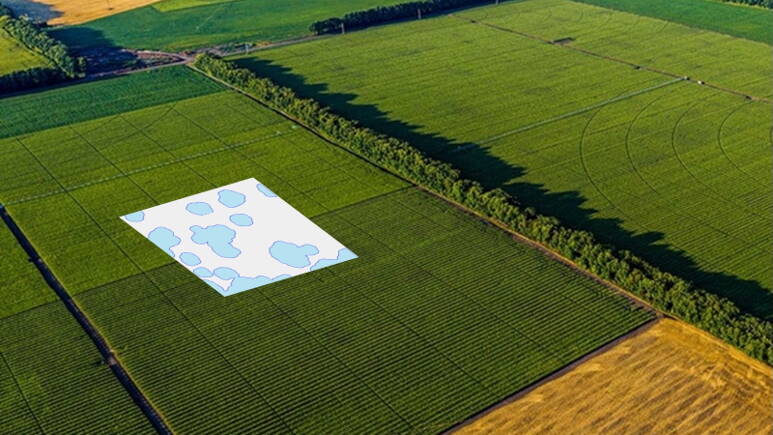
Geco, Gowan team up on predictive weed control using multi-year imagery
A new partnership between Geco and Gowan brings predictive weed mapping to more Prairie farms, using multi-year imagery to forecast patch-prone zones and support targeted herbicide plans.
“A lot of that data is unstructured and quite heterogeneous. AI has the opportunity to help farmers … make sense of it and make data-informed decisions that can help improve their business.”
For the past three years at EMILI — a Manitoba-based not-for-profit organization focused on accelerating digital ag tech in Canada — Lussier has led the Canadian Agri-food Data Initiative, a program to build the data governance capacity of the agri-food sector, touching on issues such as data sharing, privacy and cybersecurity.
“Data literacy has an important role to play in supporting the availability and the use of data within our sector, in order to create high-functioning, high-quality AI tools that work for farmers,” said Lussier.
In addition to AI-assisted data management and decision-making, advances in areas such as robotics, automation and autonomous equipment have the potential to help the ag sector address labour shortages and other challenges, he said.
“AI is a powerful, multi-purpose technology that has a whole host of different capabilities.”
What about the risks?
While many farmers have heard about how AI can benefit agriculture and food production, they may be less clear on the risks involved in adopting these tools.
One obvious example would be getting a less-than-expected return on investment on costly high-tech equipment — but what are some of the other potential risks?
A report published by researchers at the University of Cambridge in 2022 contends AI innovations, such as machine-learning models and autonomous farm machines, come with potential hazards that are “under-appreciated and poorly understood.”
That report, entitled “Responsible Artificial Intelligence in Agriculture Requires Systemic Understanding of Risks and Externalities,” states that hackers interfering with datasets used by digital farm systems and equipment could cause system failures and yield losses on a large scale.
The report maintains malfunctioning autonomous farm equipment poses a safety hazard for farm workers and could present other risks as well, such as the over- or under-application of pesticides, fertilizer and other inputs, inappropriate irrigation and unintended soil erosion.
The researchers caution that new AI technologies can lead to unintended consequences, especially if they are deployed hastily. They recommended several measures for mitigating those risks.
One suggestion in the report is “inviting rural anthropologists and applied ecologists into the technology design process, applying frameworks for responsible and human-centred innovation.”
Another recommendation is to set up data co-operatives for the purpose of improving AI data transparency and ownership rights.
A third suggestion is a more cautious approach to initial AI applications, one that involves “digital sandboxes” where technologies for new prototypes and systems could be supervised and assessed under closely monitored conditions.
In a way, EMILI’s Innovation Farms could be viewed as a proving ground for digital technology.
Situated on Rutherford Farms, a 5,500-acre commercial seed operation just north of Winnipeg at Grosse Isle, Man., Innovation Farms helps EMILI advance the development and adoption of digital agriculture in Canada by testing and validating new technologies.
“Putting a (new) technology through its paces has always been critically important, and I think AI is no different that way,” said Lussier. “We see Innovation Farms as playing a constructive role, both for AI-oriented digital technology and a host of others as well.”
Responsible AI
In October, Lussier hosted a panel discussion on the responsible use of AI at EMILI’s Agriculture Enlightened 2023 conference held in Winnipeg.
“I think the same sort of questions apply to almost any new tool that is working to create positive opportunities for farmers. Any risks or secondary effects need to be understood and mitigated so that it can deliver good value and return on investment for farmers and others who are using the tool in the agriculture sector,” Lussier told Grainews.
“To me, that’s really where the concept of responsible AI comes in.”
Celia Wanderley, chief technology officer for AltaML, a leading AI-powered solutions developer in Edmonton, was one of the panelists at EMILI’s Agriculture Enlightened conference.
In an interview with Grainews, Wanderley said she considers risk assessment is an important aspect of responsible AI.
In her view, more education and literacy awareness are needed, not just about the opportunities with AI but also “the risks and how to mitigate those risks to ensure that we move closer to adoption.
“I think the entire ecosystem, including academia and government, needs to increase that literacy to help lower that barrier to understanding and to early adoption,” Wanderley said.
Lussier said he believes “it’s really important the ag sector is engaged in the wider conversation around AI and how the technology works.”
Noting the work currently being done in Canada and globally around legislation on AI regulations and codes of practice, Lussier said farmers can help shape the future of digital agriculture by getting informed and sharing their views with governments and other relevant stakeholders.




